
On the afternoon of Sun., Jun. 7, over 2,000 protesters thronged central Brooklyn’s Grand Army Plaza to mark the 13th straight day of massive demonstrations in all corners of New York City and the United States against the May 25 death of George Floyd at the hands of four Minneapolis police officers.


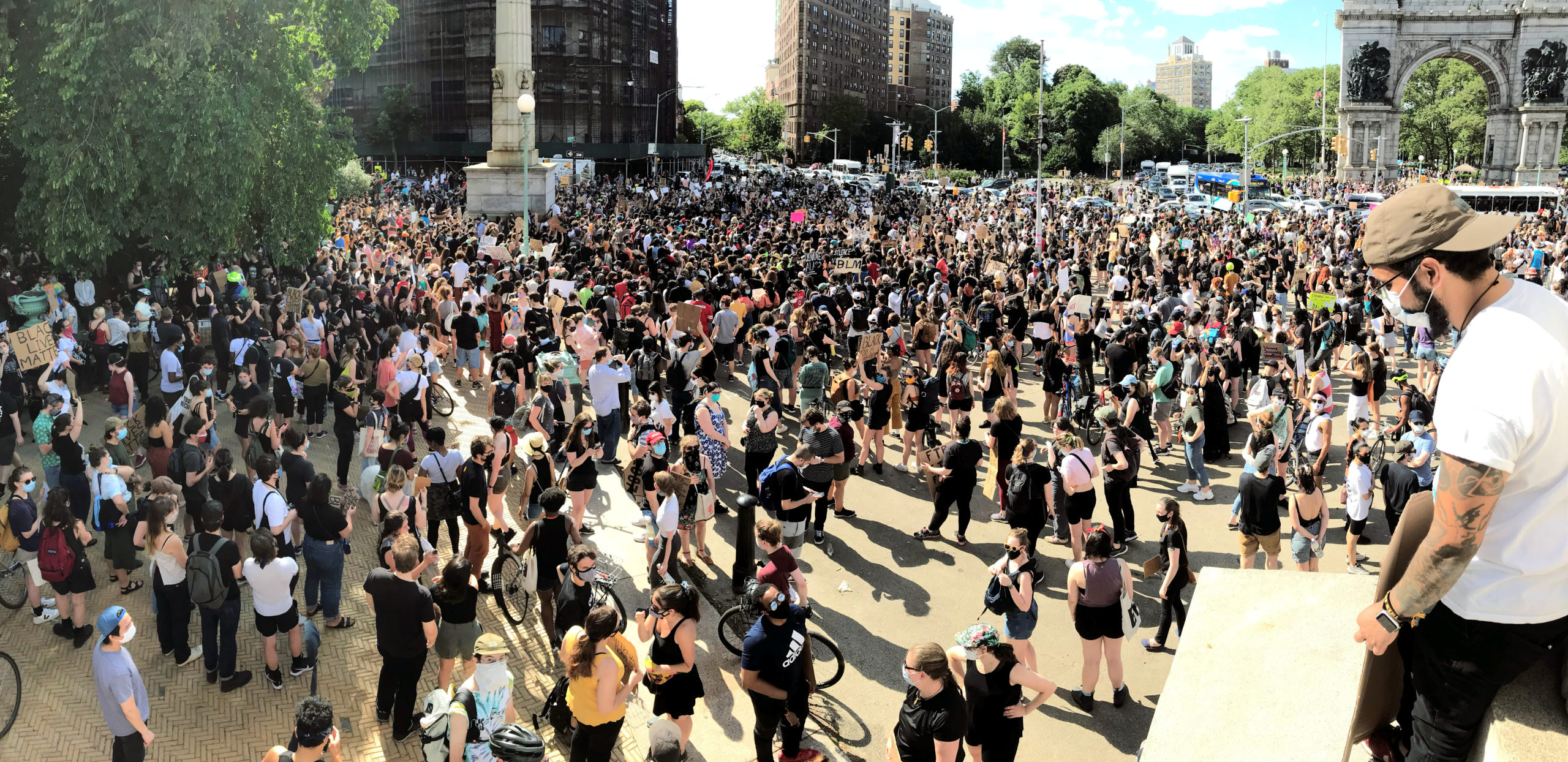
Peppered with dozens of hand-written signs and T-shirts that read “Black Lives Matter” and “No Justice, No Peace,” the vast demonstration was peaceful, multiracial, and amorphous, with impromptu spin-off marches of many hundreds parading in and out of the large square dominated by the the Soldiers’ and Sailors’ Arch (a miniature version of Paris’ Arc de Triomphe), primarily up and down Flatbush Avenue and Prospect Park West.
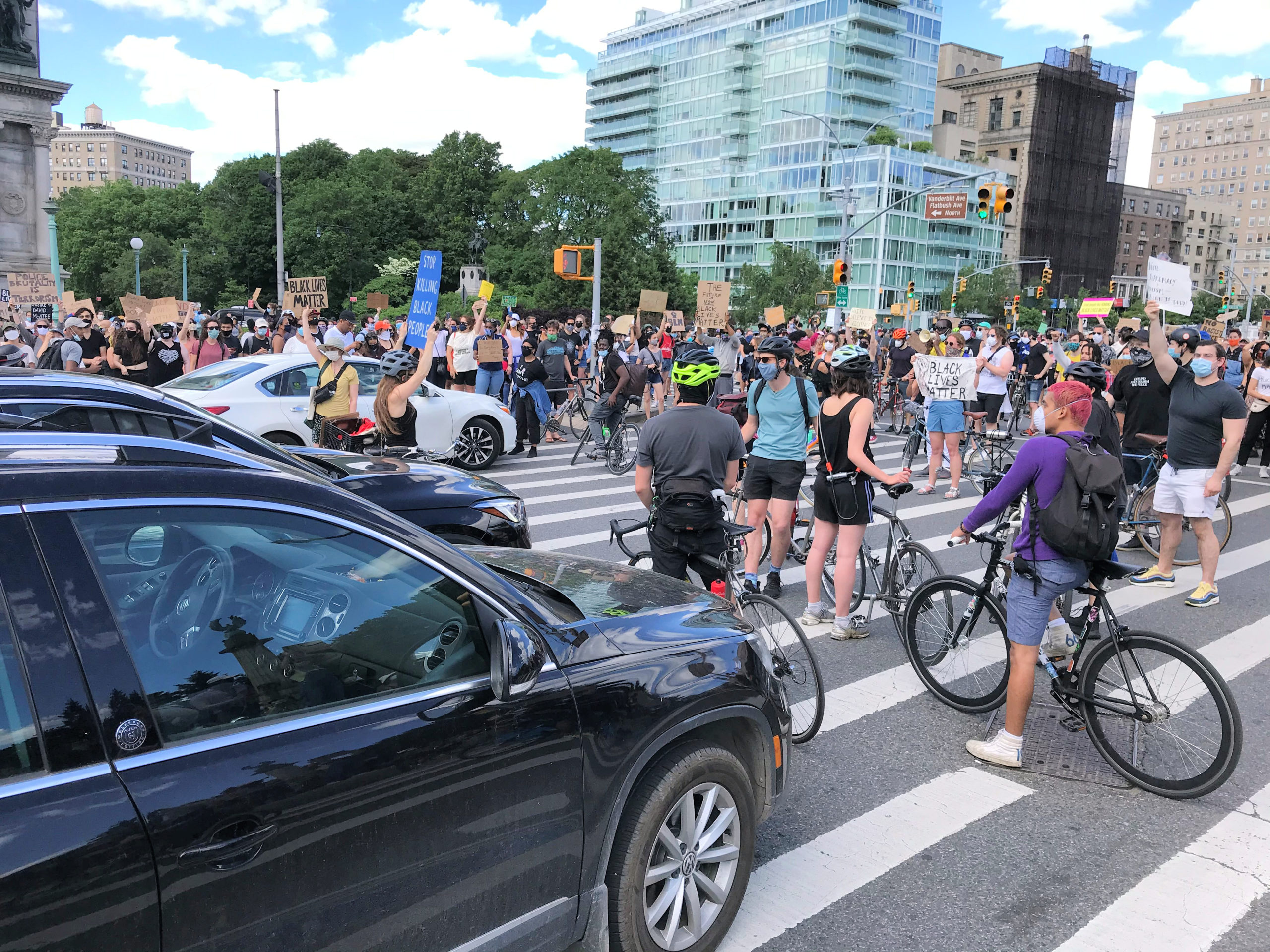
On several occasions, the boisterously chanting crowd stopped motorists for sometimes 10 or 15 minutes before letting them continue, but at no point did the New York Police Department (NYPD) intervene. The force has been sharply condemned in recent days for its aggressive tactics against demonstrators and was all but invisible on this cool, sunny summer afternoon.
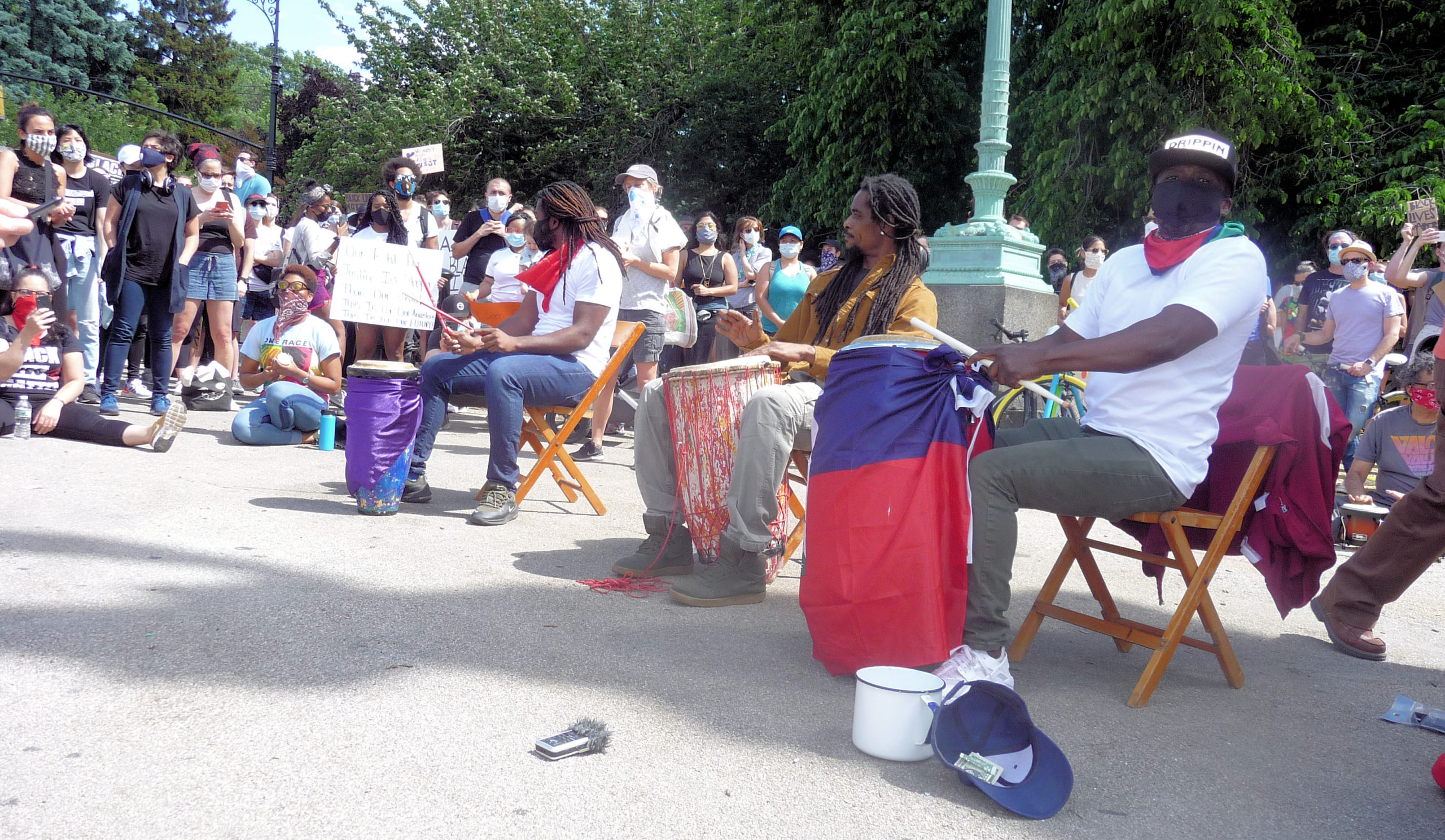
Although the chaotic multitude was leaderless, its clear guiding center was a circle of Haitian and North American drummers who are the centerpiece of the Granchimen (Big Path) cultural group, which, prior to the Covid-19 pandemic, played every Sunday evening at the La Difference Auto School at 856 Rogers Avenue (now officially renamed Jean-Jacques Dessalines Boulevard), just south of Church Avenue in Flatbush’s “Little Haiti.”

“Justice for George Floyd,” read a simple flyer circulated on Whatsapp and a few other social networks a few days earlier. “The drum is a symbol of resistance.” It announced that from 3:00 pm to 5:00 pm on Sunday there would be “lots of Haitian drumming as we demand justice for Brotha George Floyd and denounce the racist-imperial system that is spreading that same injustice in Haiti. We say no more.”

Five drummers began playing at the announced time in the paved area just west of Prospect Park’s north entrance, usually occupied by the Park Slope farmers market on Saturdays. Soon they were joined by other drums and people striking bells and sound sticks. With the infectious rhythms echoing across the plaza, very quickly the crowd swelled to hundreds and then thousands. But every few minutes the drummers would stop.
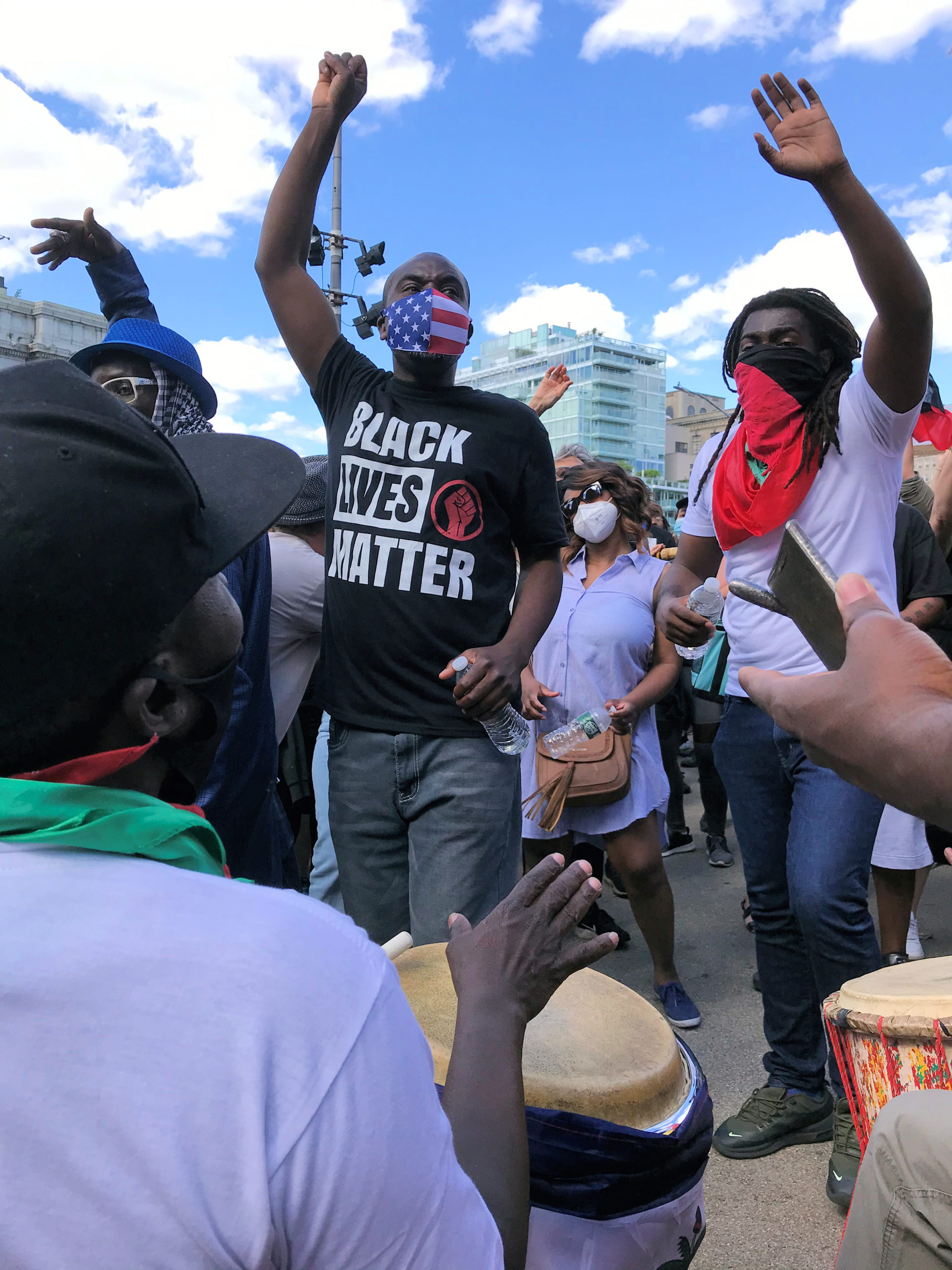
“We play for eight minutes and 46 seconds to symbolize the time our brother had to endure before he transitioned,” cried at each pause Granchimen drummer and New York City teacher Sky Menesky, who was the de facto master of ceremonies of the day. Using the crowd like a megaphone, as made famous during the 2011 “Occupy Wall Street” mobilization, Menesky would interrupt the drummers and call out “Mike check.” The crowd would shout back “Mike check,” and then repeat his words.
“We want everybody to make courage, and we will do this with happiness because we love this work of justice,” Menesky continued. “We are happy to do it. We are happy to put our bodies on the line, our souls on the line, to get justice for George Floyd and everybody.”

Shortly after 4:30 pm, the drummers began leading the demonstrators across the Plaza and down Flatbush Avenue towards Barclay Center on Atlantic Avenue. After crossing Sterling Place, the demonstrators left the sidewalk and took over the northbound lane of Flatbush Avenue. But Menesky stopped the entire raucous procession when one woman fractured her ankle by stepping in a pot-hole.
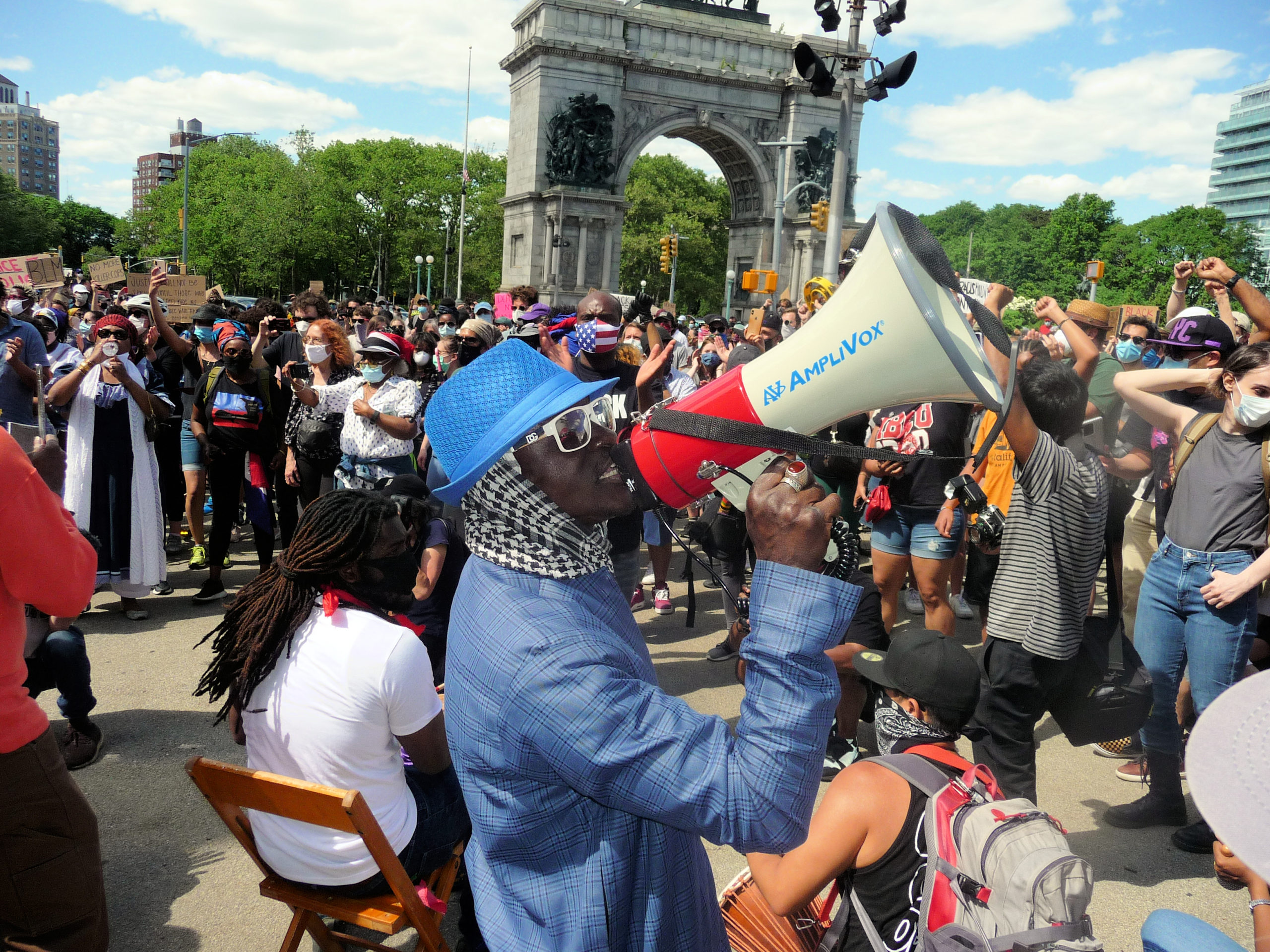
“One of our comrades fell down, so we stopped to check on her, because we move as a unit,” Menesky announced using the “Mike check” method. “The sisters have a first aid kit; they will take care of her, and she wants us to continue. Ayibobo!”
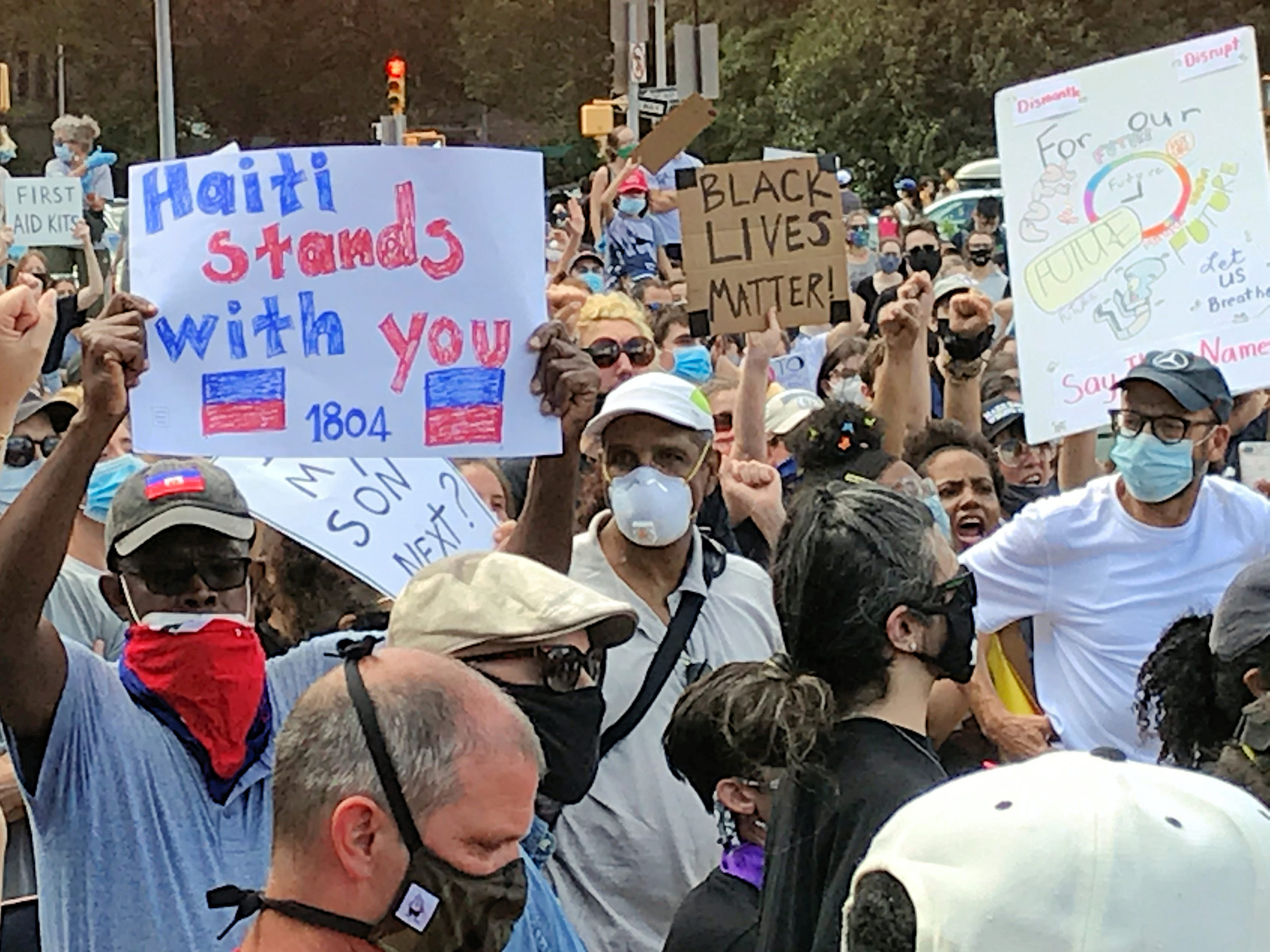
With drums beating and people dancing, the demonstrators continued down Flatbush to the Barclay Center before returning back up the hill to Grand Army Plaza, where they held a closing rally at about 6:30 pm.
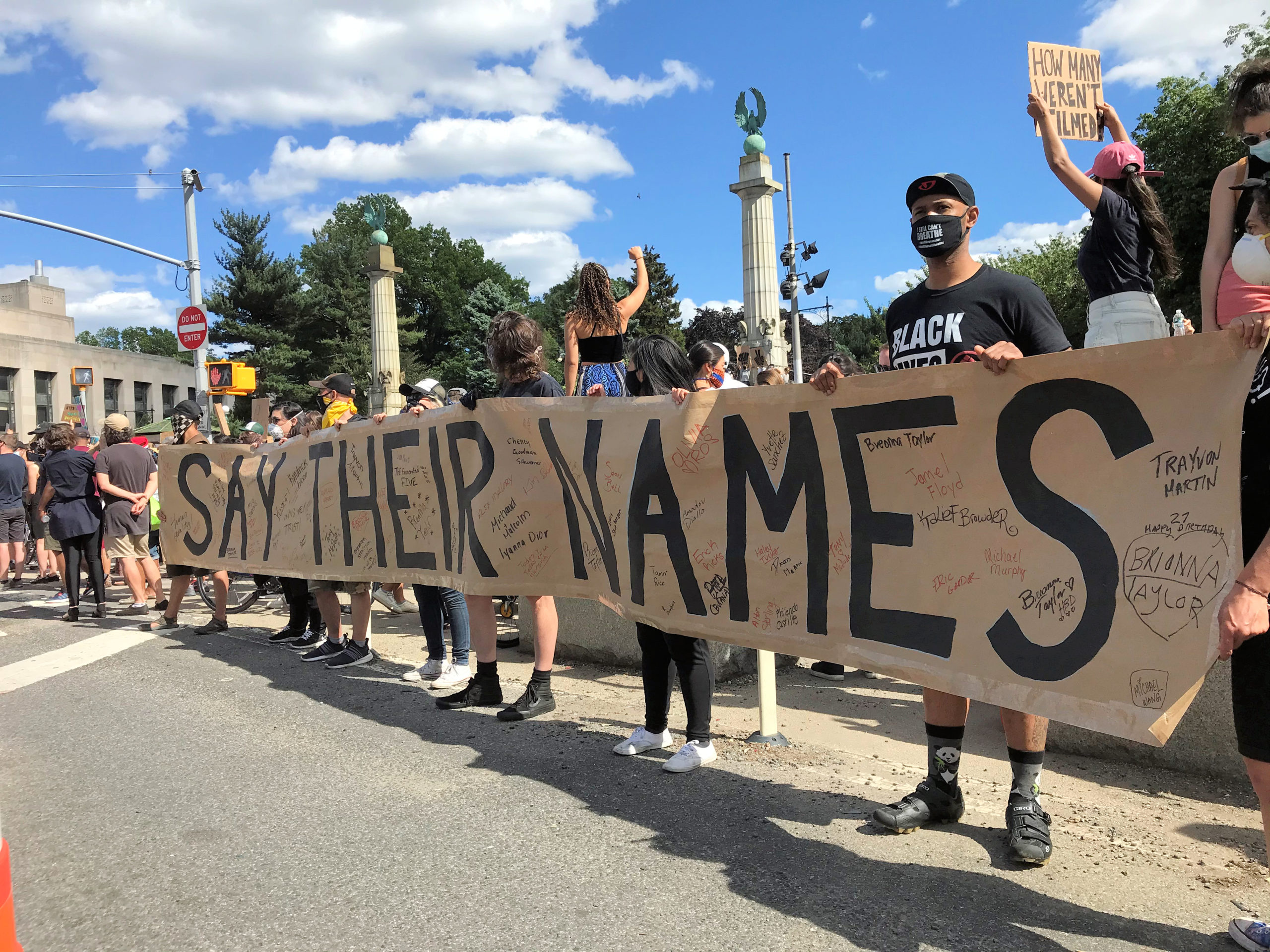
“We are here today, as the people, to scream justice for George Floyd, to say no to racism, systemic racism, institutional racism, police brutality,” Menesky told the crowd. “We want everybody to keep their energy not just for today, but every day, not just here, but at home, at your dinner table, conversations with your family, your kids, today, tomorrow, next month, next year, every day.”
About five hours after the rally, at midnight, Sky Menesky’s podcast of the demonstration had over 46,000 views on Facebook.










